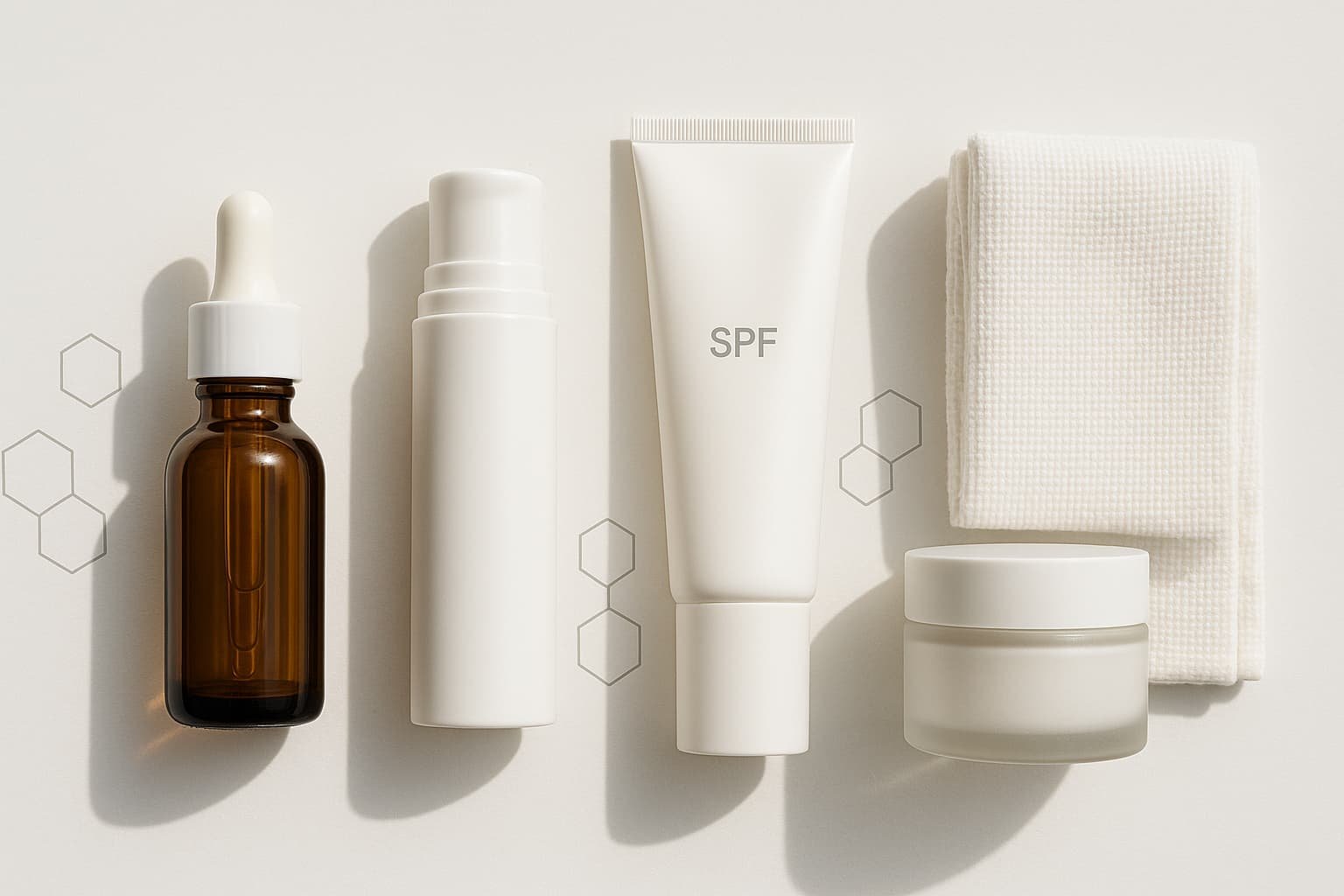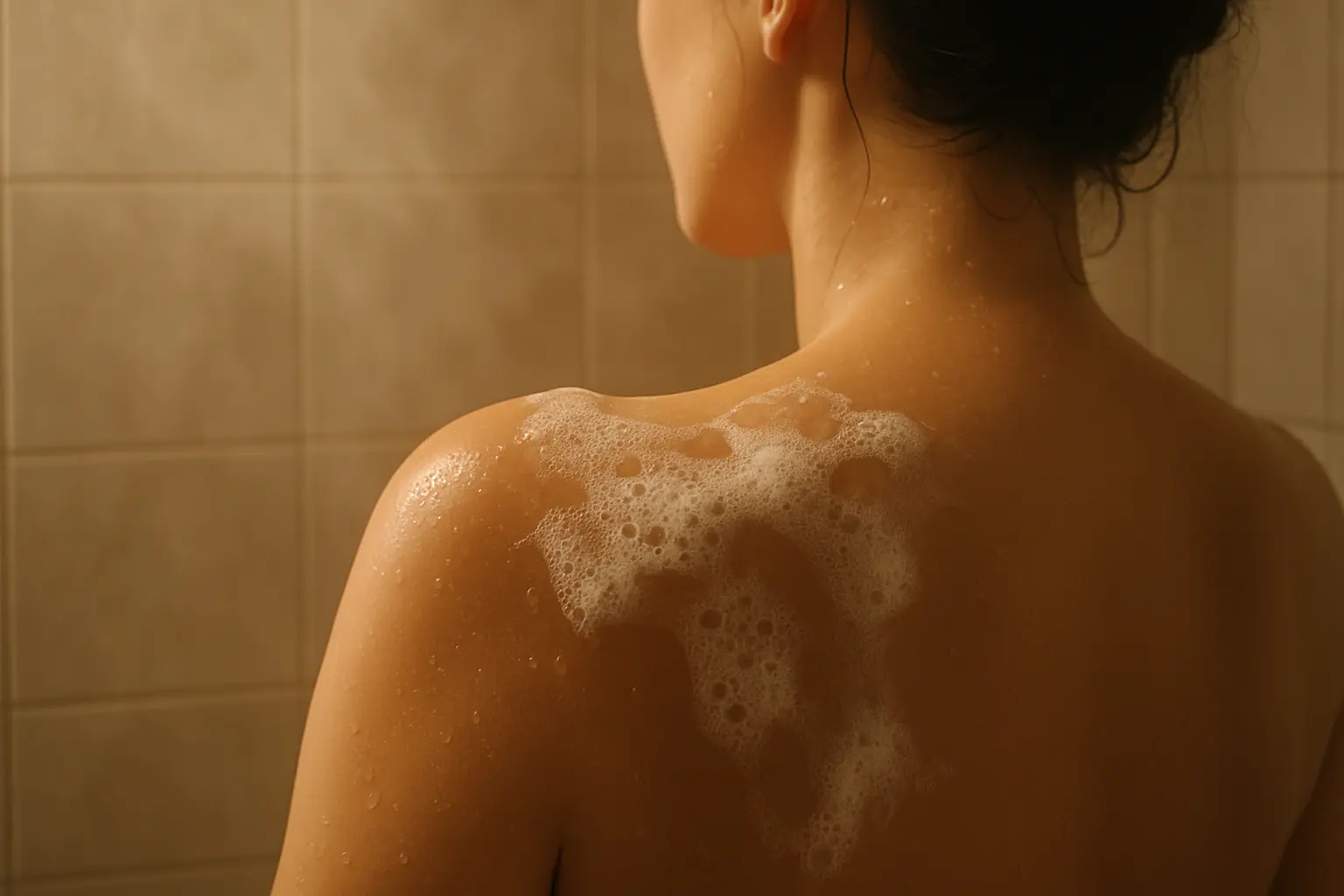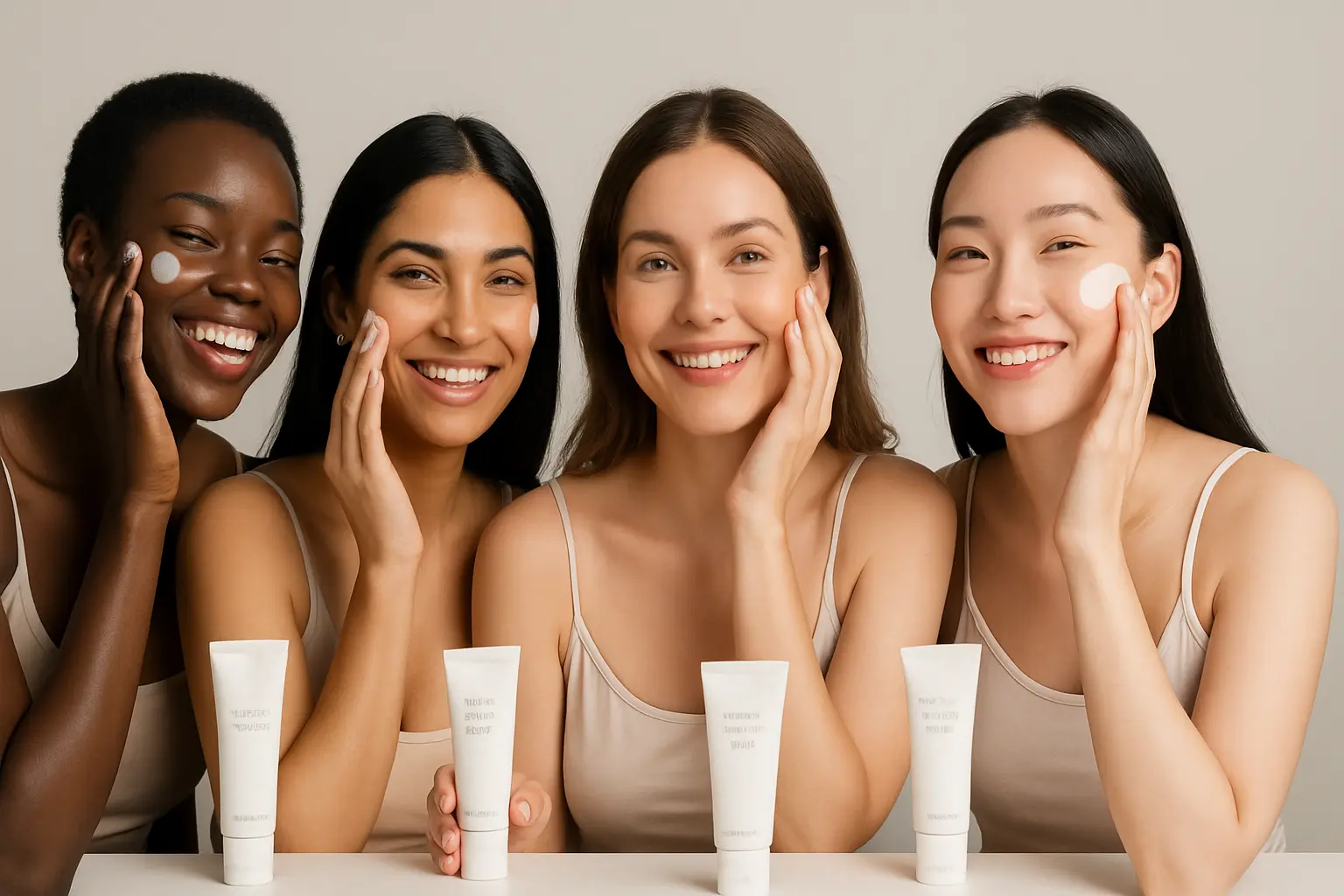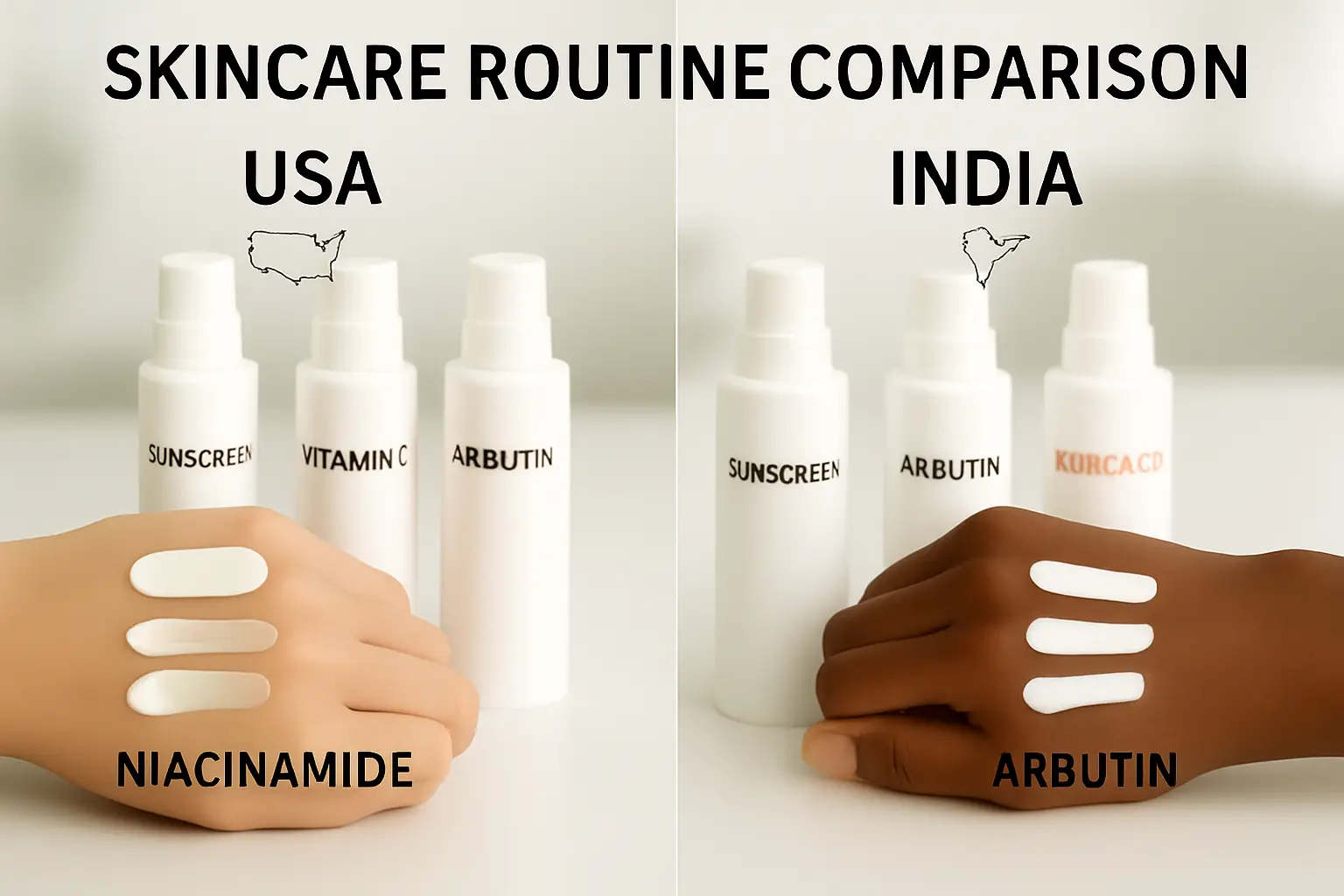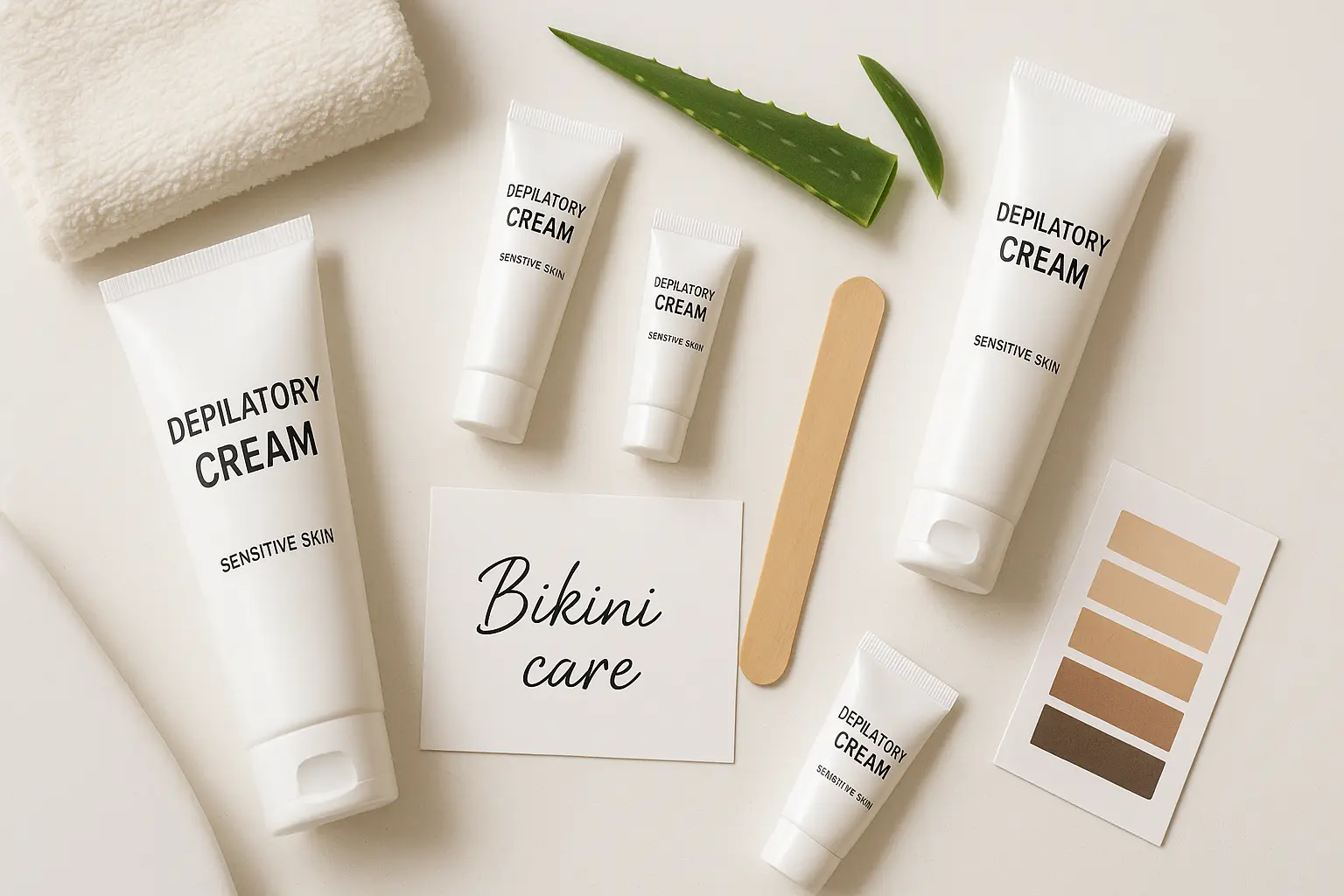Dermatologist Recommended Pigmentation Creams in India: Top Picks
Table of Contents
Introduction
Searching for the best pigmentation cream recommended by dermatologist in India? You’re in the right place. This India-focused guide simplifies the science behind pigmentation and shows you what actually works in a pigmentation cream for face and body. Whether you’re dealing with acne marks (PIH), melasma, or sunspots, we’ll map the best cream for pigmentation to your skin type, budget, and routine—grounded in dermatologist guidance and peer‑reviewed evidence. You’ll learn which ingredients fade dark spots safely, how to build a routine that accelerates results, and when a pigmentation removal cream or prescription may be warranted. Expect India‑specific tips, including budget buys under ₹500/₹1000, drugstore picks, and how to read labels for our climate and skin tones.
By the end, you’ll know how to pick an anti pigmentation cream that fits your skin and lifestyle—and how to use it for real, visible results.
Key Takeaways
- Results take consistency: most dermatologist recommended pigmentation cream plans show visible fading in 8–12 weeks with daily sunscreen.
- Ingredients matter more than branding: azelaic acid, tranexamic acid, kojic acid, alpha arbutin, vitamin C, niacinamide, AHAs, and retinoids are the top performers.
- Sunscreen is non‑negotiable: no pigmentation removal cream can outwork UV exposure; SPF 50 PA++++ is essential in India year‑round.
- Match formula to skin type: choose fragrance‑free, non‑comedogenic options for acne‑prone skin; gentle actives for sensitive skin.
- See a dermatologist for melasma, widespread pigmentation, or if OTC fails after 12 weeks; short, supervised hydroquinone cycles can be considered.
What Is Pigmentation? Types and Triggers

Hyperpigmentation simply means darker patches that don’t match your baseline skin tone. In India—where many have Fitzpatrick IV–VI (skin of color)—we commonly see:
- Post‑inflammatory hyperpigmentation (PIH): brown marks after acne, insect bites, or eczema. A skin pigmentation cream with azelaic acid, niacinamide, or retinoids helps.
- Melasma: symmetric patches on cheeks/forehead/upper lip, driven by hormones, UV, heat, and sometimes genetics. This needs stricter routines and often dermatologist care.
- Sunspots (solar lentigines): from cumulative sun exposure; respond to vitamin C, AHAs, retinoids—and daily SPF.
Common triggers in Indian contexts include high UV index, outdoor commutes, heat, pollution, harsh scrubs, and fragrance-induced irritation. People in India usually take hyperpigmentation treatment at home. However, choosing the right pigmentation cream for face, combined with sun protection and gentle skincare, is key to preventing flare‑ups and maintaining results.
How Dermatologists Evaluate Pigmentation (India Context)
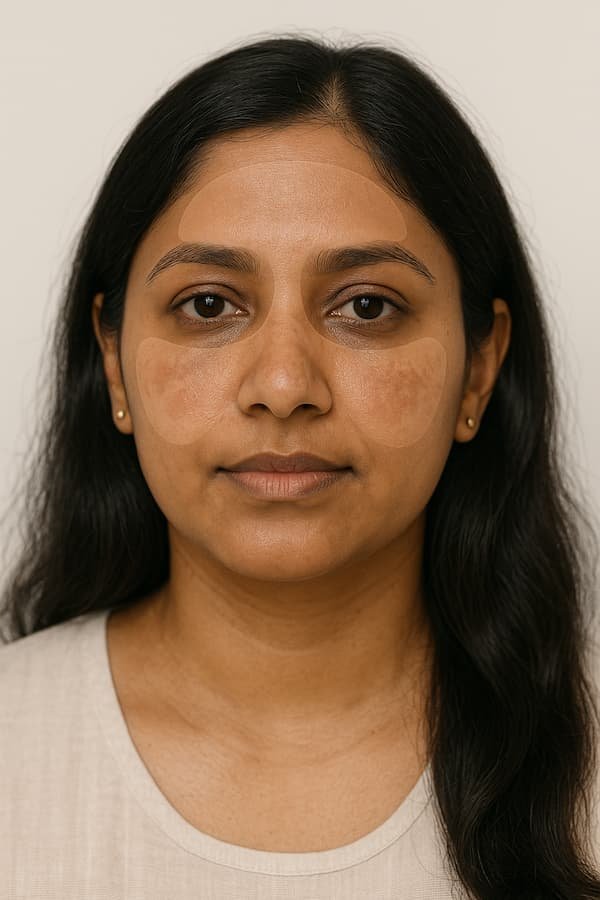
Dermatologists identify the root cause (PIH vs melasma vs sunspots), map your Fitzpatrick type (IV–VI is more PIH‑prone), and look for triggers (acne, hormones, new cosmetics). This decides whether an over the counter pigmentation cream is enough or if you need a prescription cream for hyperpigmentation in India (e.g., higher‑strength azelaic acid 20%, retinoids, hydroquinone cycles). They may also suggest in‑office treatments (chemical peels, lasers) but will always caution that no procedure replaces daily SPF. Understanding this framework helps you select a dermatologist recommended pigmentation cream India shoppers can access safely.
Dermatologist‑Approved Ingredients That Work
Think in terms of actives rather than brand names. These are the backbone of any anti pigmentation cream or pigmentation removal cream:
- Vitamin C (ascorbic acid, THD/ethyl ascorbic)
What it does: Antioxidant, brightens, helps fade sunspots and boosts sunscreen efficacy.
Who it suits: Most skin types; sensitive skin may prefer derivatives (ethyl ascorbic acid, THD).
How to use: AM, before sunscreen; 10–20% for face. Expect brighter tone in 6–8 weeks. - Azelaic Acid (10–20%)
What it does: Tyrosinase inhibition, anti‑inflammatory, helps acne + PIH, useful in melasma maintenance.
Who it suits: Oily/acne‑prone, sensitive, and pregnancy‑safe at typical topical strengths.
India note: 10% available OTC; 20% (e.g., Aziderm 20) is often Rx—follow label and your dermatologist’s advice. - Tranexamic Acid (topical 2–5%)
What it does: Downregulates melanocyte activity; especially helpful in melasma.
Who it suits: Most skin types; combine with vitamin C/niacinamide.
India note: Found in serums/creams (e.g., 3% TXA blends). Expect gradual, steady fading with daily use. - Kojic Acid (1–2% and derivatives)
What it does: Tyrosinase inhibition; strong on dark spots.
Who it suits: Normal to oily skin; can be sensitizing—buffer with moisturizers and avoid overuse. - Alpha Arbutin (1–2%)
What it does: Gentle tyrosinase inhibition; pairs well with vitamin C and niacinamide.
Who it suits: Beginners and sensitive skin; good daytime option under sunscreen. - Niacinamide (4–10%)
What it does: Reduces pigment transfer, supports barrier, calms redness.
Who it suits: All skin types; excellent for acne-prone, sensitive skin; compatible with most actives. - AHAs (Glycolic/Lactic)
What they do: Exfoliate to speed up cell turnover and enhance penetration of pigmentation creams.
Who they suit: Normal to oily (glycolic); dry/sensitive (lactic).
India note: Glycolic acid 6% creams (e.g., Glyco 6) are common; start slowly (2–3 nights/week). - Retinoids (Retinol, Adapalene, Tretinoin)
What they do: Increase cell turnover and boost pigment dispersion; anti‑acne, anti‑aging.
Who they suit: Most skin types; start low and slow to minimize irritation.
India note: Adapalene 0.1% often OTC; tretinoin is prescription—use under medical guidance. - Hydroquinone (2–4%)
What it does: Gold‑standard depigmenting agent for short, supervised cycles.
Who it suits: Stubborn PIH or melasma under dermatologist care.
India caution: Avoid chronic use or unsupervised triple combos (hydroquinone + tretinoin + steroid). Use as directed in short cycles, then break/maintain with non‑HQ actives. - Licorice Extract
What it does: Gentle brightening and anti‑inflammatory; great support for sensitive routines.
Who it suits: Reactive or rosacea‑prone skin wanting mild tone correction.
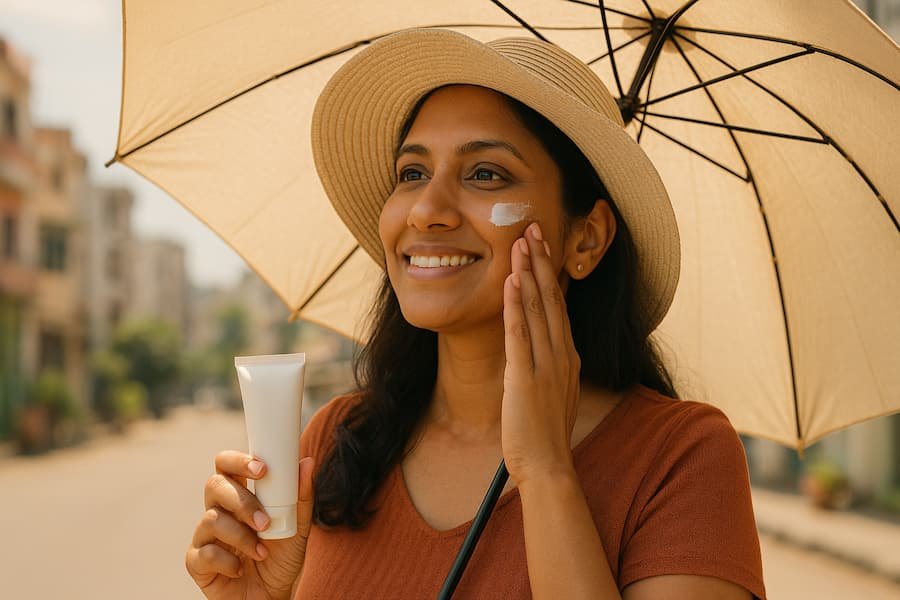
Bottom line: most effective skin pigmentation cream formulas combine 2–3 of these actives and are backed by daily SPF 50 PA++++.
How to Choose the Best Pigmentation Cream for Your Skin Type & Tone
Match the formula to your need, skin type, climate, and budget.
- Oily/acne‑prone
Go for azelaic acid 10%, niacinamide 5–10%, alpha arbutin 2%, adapalene 0.1% at night (if suitable). Look for non‑comedogenic, oil‑free gels. Avoid heavy fragrances. - Dry or mature
Pick gentle brighteners (alpha arbutin, niacinamide, THD vitamin C) in cream bases; add lactic acid 5–10% weekly and ceramide moisturizers. - Sensitive/reactive
Start with niacinamide 5%, licorice, azelaic acid 10% on alternate nights. Avoid strong peels and high‑strength glycolic early on. Fragrance‑free is key. - Deeper Indian skin tones (IV–VI)
Prefer anti‑inflammatory actives (azelaic acid, niacinamide, TXA, arbutin) and avoid over‑exfoliation to reduce PIH risk. Introduce retinoids last. - Budget filters (India)
Under ₹500 pigmentation cream: look for niacinamide 5–10%, azelaic acid 10%, alpha arbutin 2% in drugstore brands.
Under ₹1000: consider TXA blends, vitamin C 10–20%, kojic acid creams. - Labels to look for
Fragrance‑free pigmentation cream, non‑comedogenic dark spot cream, SPF 50 PA++++. - When to consider Rx
Melasma or stubborn PIH not improving after 12 weeks—speak to a dermatologist about hydroquinone 2–4% cycles, tretinoin, or azelaic acid 20%.
Best Pigmentation Cream Recommended by Dermatologists: India Picks by Concern
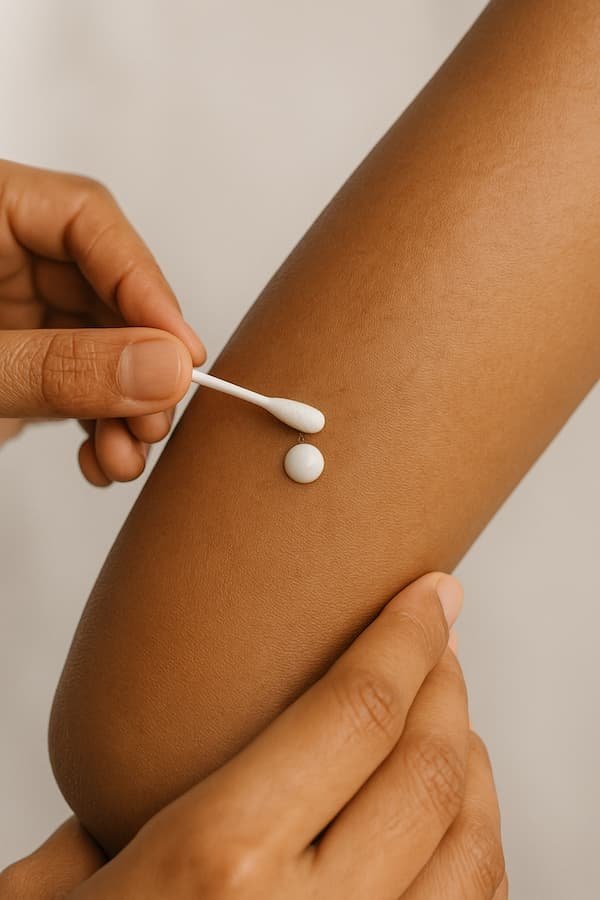
Note: These are ingredient‑based, India‑available categories—not endorsements of specific brands. Always patch‑test.
- Acne marks/PIH (post‑inflammatory spots)
Routine backbone: azelaic acid 10% gel (AM or PM), niacinamide 5–10% (AM or PM), and a retinoid at night (retinol or adapalene 0.1% if appropriate).
Optional boosters: alpha arbutin 2%, glycolic acid 6% 2–3 nights/week.
Why it works: Reduces inflammation, suppresses pigment formation, speeds turnover.
Budget idea: Under ₹500 niacinamide/azelaic creams; under ₹1000 add arbutin/TXA serum. - Melasma (forehead, cheeks, upper lip)
Routine backbone: tranexamic acid 3–5% (AM/PM), vitamin C (AM), strict SPF 50 PA++++ + hat/umbrella.
Under dermatologist care: consider short cycles of hydroquinone 2–4% and/or azelaic acid 20% with strict off‑periods.
Why it works: Melasma is hormone/UV/heat‑driven; TXA and azelaic reduce melanocyte signaling; HQ is effective but needs supervision. - Uneven tone/sunspots
Routine backbone: vitamin C 10–20% (AM), AHA (glycolic or lactic) 2–3 nights/week, retinol at night if tolerated, plus daily sunscreen.
Why it works: Antioxidants + controlled exfoliation fade accumulated UV spots. - Sensitive skin or barrier‑impaired
Routine backbone: niacinamide 5% + licorice extract + alpha arbutin 2%; avoid harsh acids initially.
Tip: Start actives on alternate nights; add ceramides and squalane to buffer. - Lip pigmentation
Use a lip‑safe depigmenting balm with licorice/niacinamide derivatives if available, plus SPF 30+ lip balm daily. Avoid fragranced or mentholated balms. Patch‑test—lips are sensitive.
Note: Many face actives (kojic, glycolic, retinoids) are too strong for lips. If persistent, consult a dermatologist for tailored lip pigmentation cream guidance. - A note on “Bye Bye Pigmentation” cream
Treat “bye bye pigmentation cream” as a marketing claim—check the INCI list for the actives above. If a formula lacks proven actives or is heavily fragranced, skip it. Choose evidence‑backed alternatives with TXA, azelaic acid, arbutin, kojic, niacinamide, or vitamin C.
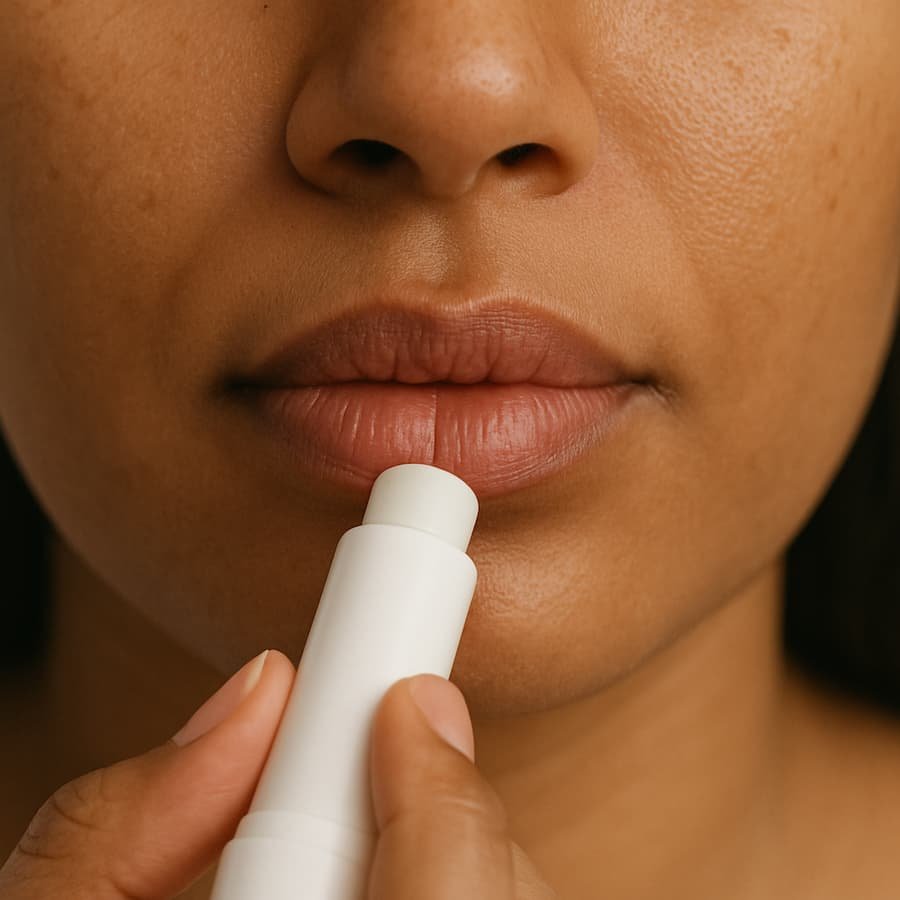
Routine: Faster, Safer Results (AM/PM)
A smart routine helps a good pigmentation cream for face work faster.
AM
- Cleanser (gentle, pH‑balanced)
- Vitamin C serum (or alpha arbutin/niacinamide if sensitive)
- Targeted anti pigmentation cream (e.g., TXA or azelaic acid, thin layer)
- Moisturizer (light gel for oily, cream for dry)
- Sunscreen SPF 50 PA++++ (2–3 finger lengths for face/neck); reapply every 2–3 hours outdoors
PM
- Cleanser (double cleanse if sunscreen/makeup)
- Retinoid (retinol/adapalene) OR AHA (alternate nights)—avoid layering strong retinoid + strong AHA the same night
- Targeted pigmentation cream (kojic/azelaic/arbutin blend)
- Moisturizer; occlusive if dry areas need it
Rules that boost results
- Patch test new actives for 24–48 hours.
- Can I use pigmentation cream with retinol and AHA in India? Yes, but alternate nights and buffer with moisturizer; avoid mixing strong formulas together.
- Can I use vitamin C and niacinamide with pigmentation cream in India? Yes—most skin tolerates this well; apply vitamin C first, then niacinamide, then sunscreen.
- Expect timelines: 4–6 weeks for brightness; 8–12 weeks for noticeable spot fading; melasma often needs ongoing maintenance.
- Day cream with SPF for pigmentation India: great as a convenience layer, but still top it with a broad‑spectrum SPF 50.
Safety, Side Effects, and Pregnancy
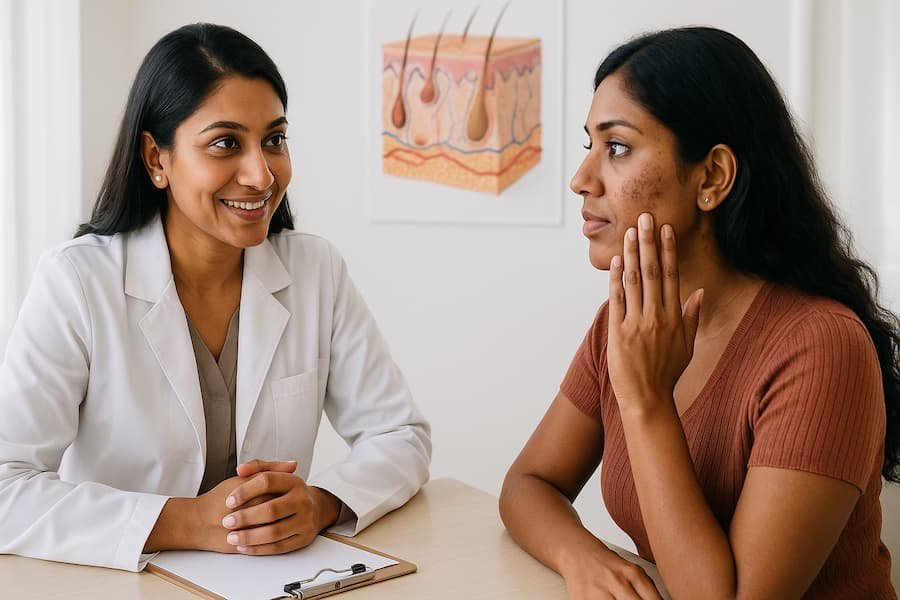
- Irritation and over‑exfoliation: Redness, stinging, and new darkening can occur if you overuse acids/retinoids. Cut frequency, moisturize more, and reintroduce slowly.
- Hydroquinone cautions: In India, HQ 2% may be available OTC in some products; HQ 4% and triple combos are often prescription. Avoid chronic unsupervised use and steroid‑containing triple combos—see a dermatologist for short, supervised cycles only.
- Pregnancy/lactation: Many derms consider azelaic acid and niacinamide appropriate; avoid retinoids; consult your doctor about any product. Look for “pregnancy safe pigmentation cream India” in labels and verify with your clinician.
- Photoprotection: No anti pigmentation cream will work without strict UV protection; use SPF 50 PA++++ daily and reapply outdoors.
FAQs: Best Pigmentation Cream Recommended by Dermatologist India
Which is the best pigmentation cream recommended by dermatologists in India?
There’s no single winner for everyone. For most, azelaic acid 10% + niacinamide 5% with SPF is a safe start; melasma often responds to TXA 3–5% and, if needed, short HQ cycles under a dermatologist.
Best dermatologist-recommended pigmentation cream for oily skin in India?
Lightweight gels with azelaic acid 10%, niacinamide 5–10%, and alpha arbutin 2% work well; add adapalene 0.1% at night if acne‑prone.
Best dermatologist-recommended pigmentation cream for sensitive skin in India?
Start with niacinamide 5% + licorice + alpha arbutin 2%; introduce azelaic acid 10% slowly; avoid strong acids initially.
Best cream for melasma on face dermatologist recommended in India?
TXA 3–5% + vitamin C AM with SPF 50; consider azelaic acid 20% or hydroquinone 2–4% short cycles under supervision.
Dermatologist-recommended pigmentation cream for acne scars in India?
Azelaic acid 10–20% + retinoid at night; add alpha arbutin 2% or glycolic acid 6% 2–3 nights/week if tolerated.
Best pigmentation removal cream for dark spots on face in India?
Look for kojic acid 1–2%, alpha arbutin 2%, or TXA blends. Pair with SPF; “removal” is gradual, not instant.
Dermatologist-recommended lip pigmentation cream in India?
Use lip‑safe balms with licorice/niacinamide derivatives and daily SPF 30+ for lips; avoid harsh acids/retinoids on lips.
Pregnancy-safe cream for hyperpigmentation recommended by dermatologist in India?
Many clinicians suggest azelaic acid and niacinamide; always confirm with your obstetrician/dermatologist.
Hydroquinone vs azelaic acid for hyperpigmentation dermatologist opinion India?
HQ can act faster for tough spots but needs short, supervised use; azelaic acid is safer long‑term and pregnancy‑friendly with steady results.
How long does pigmentation cream take to work dermatologist India?
Brightening in 4–6 weeks; spot fading in 8–12 weeks; melasma typically needs ongoing maintenance with strict sun protection.
Is tranexamic acid cream safe for daily use in India?
Yes for most, at 2–5% topically; monitor for irritation and pair with sunscreen. Check label directions.
Can I use vitamin C and niacinamide with pigmentation cream in India?
Yes—commonly layered. Vitamin C first, then niacinamide; finish with SPF AM.
Best budget pigmentation cream under 500 in India?
Niacinamide 5–10% gels and azelaic acid 10% creams are common under ₹500; check for fragrance‑free, non‑comedogenic labels.
Best drugstore pigmentation cream recommended by dermatologist in India?
Look for ingredient‑led options featuring TXA 3–5%, alpha arbutin 2%, kojic 1–2%, or azelaic 10%—choose per your skin type and budget.
Best pigmentation cream for men in India?
Same actives apply; focus on light textures (gel/serum), niacinamide 10%, azelaic 10%, TXA 3–5%, and consistent SPF.
Best pigmentation cream for dark skin (skin of color) India?
Prioritize anti‑inflammatory brighteners (azelaic, niacinamide, TXA, arbutin); avoid aggressive peels to reduce PIH risk.
Can I use pigmentation cream with retinol and AHA in India?
Yes, but alternate nights (e.g., retinoid one night, AHA another) and moisturize well.
Night routine for pigmentation cream application India?
Cleanse → retinoid or AHA (alternate nights) → targeted pigmentation cream → moisturizer; add occlusive if dry.
Bye Bye Pigmentation cream review dermatologist view India?
Judge by INCI, not the name. Choose formulas with proven actives (TXA, azelaic, arbutin, kojic, niacinamide) and avoid heavy fragrance.
Conclusion
For the best cream for pigmentation on face, focus on proven actives and daily SPF—then tailor texture and strength to your skin type and budget. If progress stalls after 12 weeks, book a consult for a dermatologist recommended pigmentation cream India plan (and consider short, supervised prescriptions). Consistency wins. Top choices of best pigmentation cream recommended by dermatologist are available in India at affordable cost. Make use of them for your best benefits.

